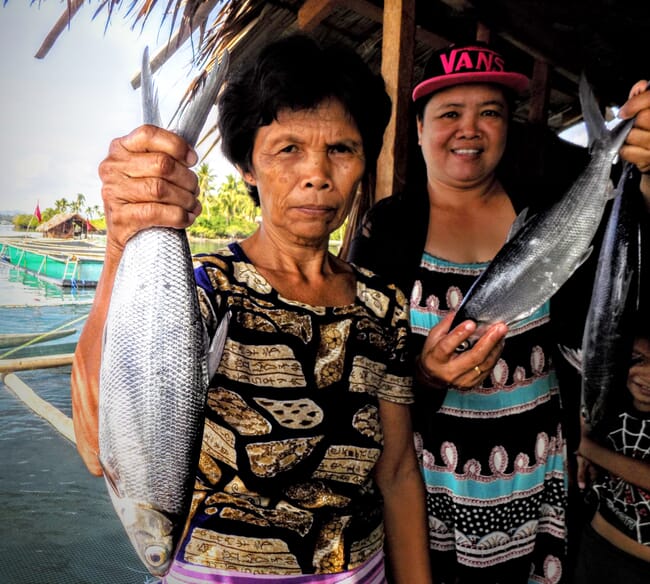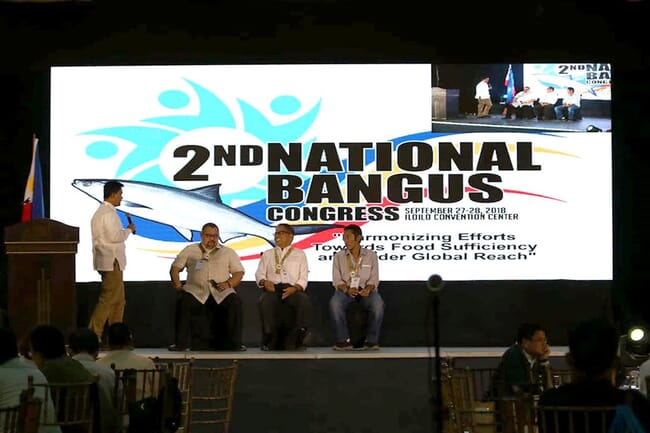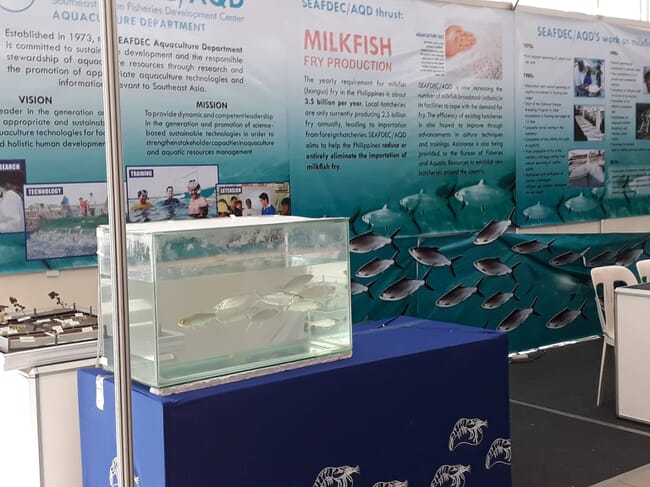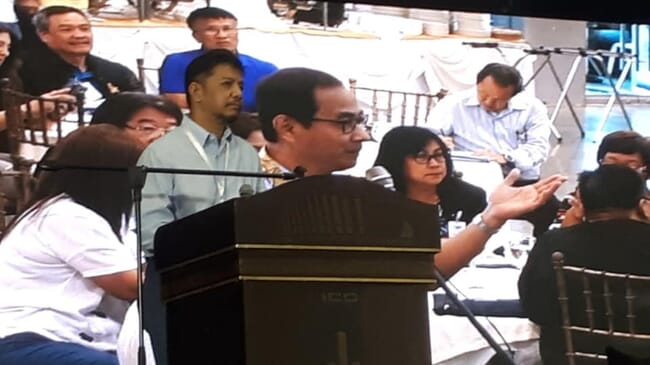Last week Iloilo City hosted the Philippines second National Milkfish Congress. It was an appropriate location, as it was here that induced breeding of wild-caught milkfish was first successfully undertaken in 1977, effectively revolutionising the culture of the species.

Around 1,000 delegates attended the two-day event, which was organised by the Philippine Milkfish Industry Group (PhilMIG). Set against the backdrop of a looming crisis in local fisheries production and a controversial government decision to import 17,000 tonnes of roundscad from China to augment food stocks, the congress organisers aimed to emphasise the positives of the country’s milkfish production, as well as present a unified industry front to the millions of domestic consumers who count on the species for their daily protein requirements, but are balking at rising retail prices. Prices for the fish, locally called “bangus,” have increased by as much as 70 percent in a year – rising from around US$2/kg to US$3.2-3.5/kg at local markets.
The headline theme was “Harmonizing Efforts Towards Food Sufficiency and Wider Global Reach”. Although this is reflective of what both the private sector, led by the Philippine Alliance of Fisheries Producers (PAFPI) and the Bureau of Fisheries and Aquatic Resources (BFAR), are trying to do, it was overshadowed by concerns raised by milkfish growers. These ranged from the current sustainability of fry supply to the age-old problem of high production costs, primarily due to feed prices.

As the most prominent government officials were conspicuously absent during the congress – for example Congresswoman Vilma Santos-Recto, author of the National Mariculture Act, failed to deliver the keynote speech – it was up to the private sector to drive the event's agenda. This was very disappointing for many delegates, who were desperate to hear about solutions to immediate problems such as the promised National Broodstock Development Program, which has yet to see the light of day, and an outcome to the government’s supposed plan to stop, either partially or completely, imports of milkfish fry from Indonesia.
However, those government representatives who did attend skirted around the issue. Speaking during the opening ceremonies, BFAR Assistant Director Drusila Esther Bayate sidestepped the issue of Indonesian fry imports, in favour of detailing plans to develop more local hatcheries to diminish the industry’s dependence on imported seedstock – a laudable plan, but something that will probably not come to fruition for another five years.
She questioned reports that there was a shortage in production, reporting that the country produced 406,000 tonnes of milkfish in 2017 – 3.4 percent more than in 2016. “There were years that it stagnated,” she said, but in the last two to three years, it [the industry] was marked by growth.”
Some from the private sector disagreed, however, citing shortfalls in production from the recent spate of typhoons that have affected fish cage operations, thereby raising prices. The Bangus Industry Stakeholders & Dealers Alliance (BISDA) claimed that “rising prices for milkfish are due to losses suffered by growers in Pangasinan, Pampanga and Bulacan due to heavy rain associated with the southwest monsoon and recent typhoons”.

Trouble on the horizon
The lack of local seedstock availability has been happening for quite some time, owing to the decline in the wild fry supply, and growers in the Philippines have become more and more dependent on importing bangus fry from Indonesia.
According to the head of BFAR’s National Inland Fisheries Technology Center, Westly Rosario, the country “needs at least 1.5 billion fry just to sustain the industry and more than two billion for it to grow”. Industry estimates put the current supply share from Indonesia at 50 percent of the Philippines’ total fry requirement.
On the grow-out front, aside from the recent underperformance in production, several mariculture sites have been suffering from increasing mortalities. Earlier this year, milkfish growers in the town of Bolinao, Pangasinan province, suffered losses of more than half a million US dollars from stock mortalities. This was not an isolated incident, and other production sites also suffered massive fish kills.
The road to recovery
Despite the uncertainty on some key issues, the congress did offer glimpses of hope for the industry. Aside from the technical sessions and industry updates, part of the event activities included BFAR’s turning over to local government representatives the official “notices to proceed” for the construction of 15 fish hatcheries in different cities and municipalities, after the proposed locations passed site evaluations conducted by the Southeast Asian Fisheries Development Center (SEAFDEC). SEAFDEC was contracted by BFAR to assess the pre-identified hatchery sites, recommend technologies to be deployed, outline production cycles, as well as prepare the necessary site development plans.

According to SEAFDEC Chief Dan Baliao, these government-funded hatcheries will “shore up the supply of fingerlings for fish farmers”. In a separate technical session, Baliao also talked about ongoing R&D efforts being undertaken by SEAFDEC to improve not just milkfish production, but also other major and emerging cultured species in the Philippines.
Invited speakers also presented effective business models for aquaculture production in the Philippines, such as contract growing ventures implemented by Alsons Aquaculture Corporation, one of the country’s biggest corporate aquaculture firms, as well as successful common resource use arrangements being done by the Taal Lake Aquaculture Alliance, Inc. (TLAAI), in Taal Province, another major aquaculture area.
At the culmination of proceedings, PAFPI President Joseph Borromeo presented a manifesto of support to government efforts to provide the Filipino people with affordable and available fish. The declaration was issued by PAFPI, together with PhilMIG and duly supported by other major aquaculture industry organisations, such as the Philippine Association of Tilapia Growers (PhilTilapia) and the High Value Aquaculture Philippines (Hi-VAP).



